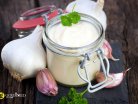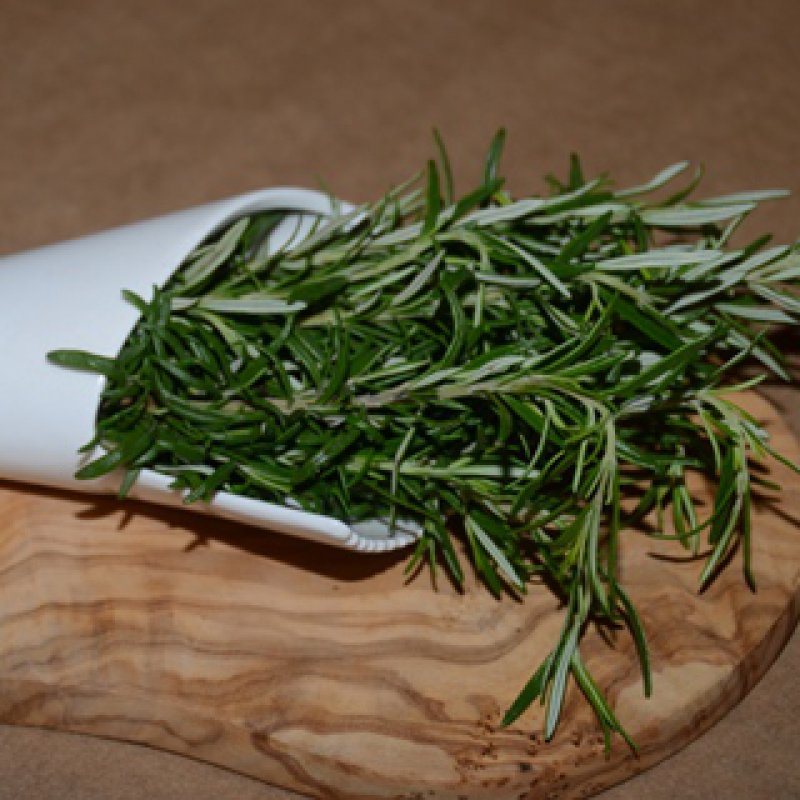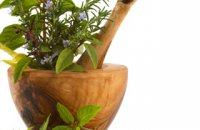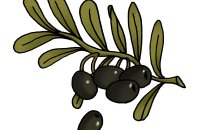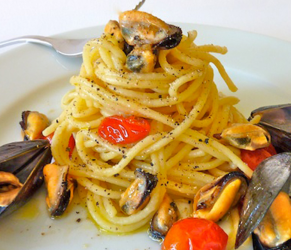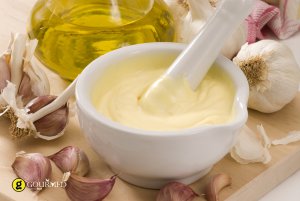A summer afternoon on the island of Alonnisos comes to mind when I think of rosemary: a small chapel with a magnificent view of the sea; a hillside redolent of pine trees; and, in the courtyard outside the chapel, a magnificent rosemary bush- mammoth and seemingly on fire amidst the backdrop of the setting sun.
The ancient Greek name for the plant, "livaniotis," directly indicates its use in antiquity. Together with frankincense, myrrh, and other plants, it was used in smoking and cleansing rituals. Containing essential oils and tannins, such plants have the unique ability to produce a slow-burning aromatic smoke. Once closely associated with Aphrodite, rosemary has been employed since ancient times in ceremonies, celebrations, and rites of passage such as births, marriages, and deaths. Even today, children celebrate the "birth" of the new year sweetly caroling, "New month and New Year, My tall rosemary," as they meander door-to-door throughout Greece on New Year’s Eve.
From Portugal to Germany to Turkey, songs of love and death reference rosemary. As fellow members of the mint family, herbs like thyme, sage, and oregano will cover hillsides as they merge and mingle. But rosemary is a plant onto itself. It roams the hills in solitude, exuding an air of severity with its formidable flamelike appearance. Similar to the cypress tree, rosemary is dark green and keeps its branches close to its trunk. Its flowers, hidden deep among its sharp, needlelike leaves, can be either white or light purple, but always minute. In its uplifted stance, its valiant orientation towards the heavens, it is thought to resemble a blazing candle.
Rosemary’s effect is like its shape: uplifting. Besides warming the body and clearing the head, it vitalizes the central nervous system. With its unique ability to harmonize blood flow, the plant is commonly employed to circulate blood to the body’s “sacks”- namely the brain, heart, stomach, bladder, gall bladder and womb. Such therapeutic action results from the cooperation of the essential oils and flavonoids. Rosemary creates a pleasant warmth, rejuvenating and relaxing the body at the same time. While the plant is often employed to dispel the midday slump without causing harmful side effects to the nerves, it is often the main ingredient within herbal mixes that counter insomnia.
The plant also has the ability to counter spasms, paralysis, trembling, and arthritis and is thought to be a tonic for memory. It helps regulate the menstrual flow while acting against sterility and counteracting hormonal problems. During menopause, it is known to counteract the anxiety and agitation that the hormone changes often entail.
It enhances our abilities to concentrate, while its acids are known to fight germs and fungi. Thus, its ideal use is in steam baths and massages; not only will the plant vitalize and relax both body and spirit after a tiresome day, but it will ward off a cold or the flu. In the evening it helps the body to wind down, while in the morning it helps it to wind up. It is known to remedy depression, instilling within a dispirited person a new internal fire.
The Innumerable Properties of Rosemary
Considered to be one of the most valuable healing plants we have at our disposal, rosemary is renown for its medicinal and therapeutic properties. Use it to liven up your Christmas Table, or hang it up instead of mistletoe and make new mediterranean rules to the game!
Σχετικά άρθρα
Δημοφιλείς συνταγές

































